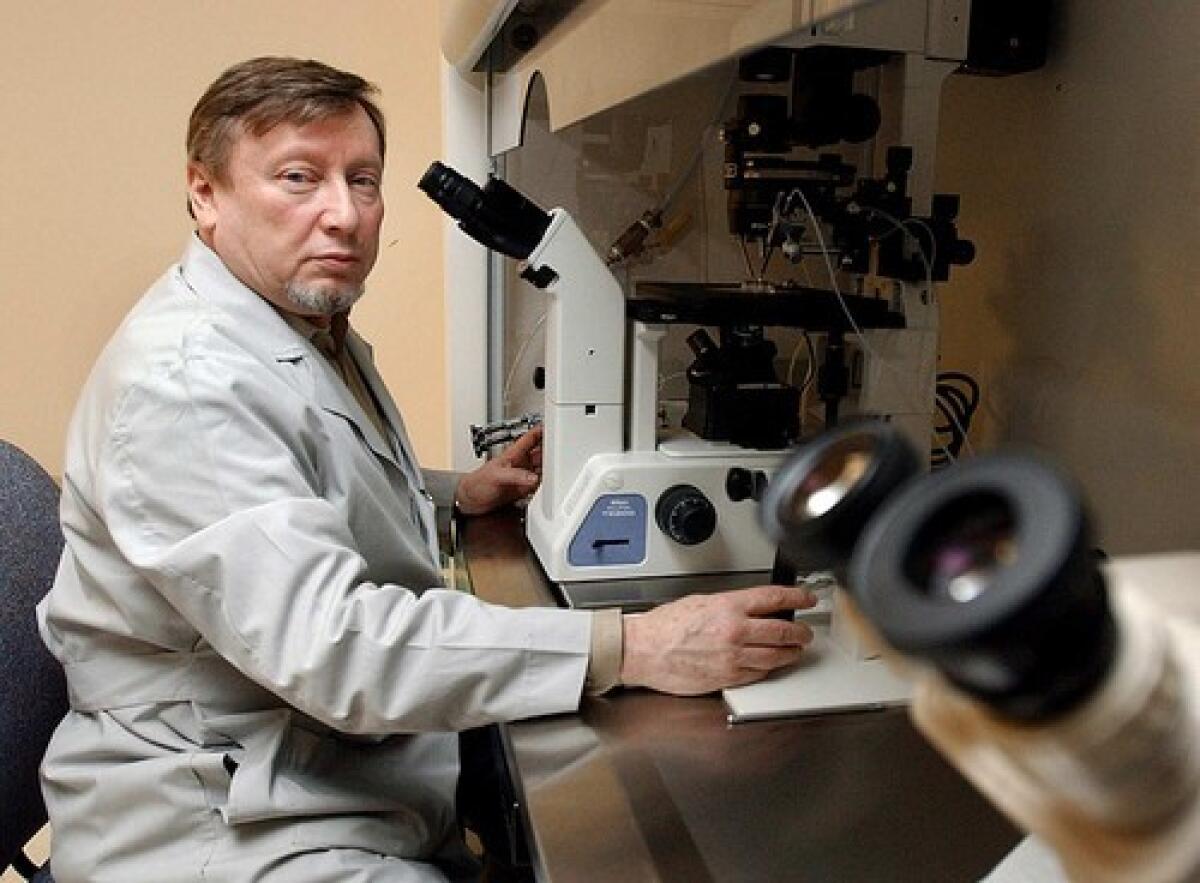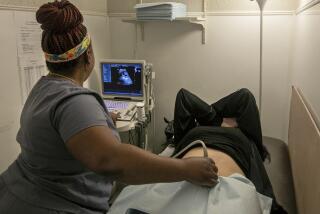Yury Verlinsky dies at 65; pioneered genetic testing method

Yury Verlinsky, the Russian emigré who was the first researcher in the United States to perform chorionic villus sampling to detect birth defects and who pioneered the development of pre-implantation genetic diagnosis to detect potential genetic problems before a fertilized egg is implanted in the mother, died of colon cancer Thursday at Northwestern Memorial Hospital in Chicago. He was 65.
A solid researcher, Verlinsky was also somewhat controversial because of his efforts to help the parents of young Molly Nash, who suffered from life-threatening Fanconi anemia, conceive a son, Adam, whose umbilical cord cells saved Molly’s life. Two years later, in 2002, he helped a mother carrying the gene for early-onset Alzheimer’s disease conceive a daughter who was free of the gene.
He was criticized in both cases -- in the first instance for, in effect, creating a child to use for spare parts, and in the second for assisting the birth of an infant whose mother would soon not be able to take care of her. He stoutly defended his actions, arguing that Adam Nash’s parents loved him for himself and that the mother with Alzheimer’s hoped that medical science would be able to alleviate her condition.
Prenatal testing is a relatively recent invention, with geneticists first performing amniocentesis in the late 1950s. In that procedure, fetal cells suspended in amniotic fluid are extracted with a needle and examined -- initially for visible chromosomal abnormalities, but now for a wide range of genetic effects. It is a relatively safe procedure if performed after 16 weeks of gestation, with a risk to the fetus of much less than 1%. Performed earlier, however, it can damage limb development.
In the 1970s, researchers in Europe and the Soviet Union began using a newer technique called chorionic villus sampling, in which they removed chorionic villi -- wisps of tissue from the outside of the placenta where the fetus is developing -- for testing. This tissue has DNA genetically identical to that of the fetus. The risks are about the same as, or slightly greater than, those for amniocentesis, but the test can be performed as early as 10 weeks, when many prospective parents are more comfortable with an abortion.
Verlinsky learned the technique in the Soviet Union. When he arrived at Michael Reese Hospital in Chicago in 1979, he began performing the procedure. The procedure soon became widely adopted and is now routine for many prospective parents, particularly those couples with a history of genetic abnormalities or in which the woman is over 35.
In 1990, he established the Reproductive Genetics Institute in Chicago to provide prenatal testing, plowing the profits back into the organization to support research.
A year earlier, Verlinsky had gotten the idea for pre-implantation genetic screening while viewing a 1935 Joan Miro painting in a Jerusalem art gallery. The painting featured two disks, one red and one yellow, floating in space, with a small, round black object under the red one. The disks reminded him of human eggs, perhaps with one changing into the other by ejecting the black object. In a flash of insight, he took out a business card and wrote “polar bodies” on the back of it.
Polar bodies are the package of chromosomes ejected by the egg before fertilization by sperm -- half of the egg’s initial genetic complement. Verlinsky’s insight was that he could analyze the polar body to look for certain genetic defects in the resulting egg. This approach was useful when both parents were carriers of a genetic defect -- that is, they had only one copy of the mutated gene and one healthy copy.
If the unmutated copy appeared in the polar body, then Verlinsky knew the egg carried the mutated version, and vice versa. By using only eggs with the healthy version of the gene, the child would be protected even if the father passed on the mutated version.
This approach produced many healthy pregnancies, but it was soon displaced by the discovery by Verlinsky and others that a single cell could be removed from an early fertilized egg without disturbing subsequent development.
That cell can then be used for genetic diagnosis, and researchers are now able to test for more than 100 different genetic disorders. That technique was used for both Adam Nash and the Alzheimer’s patient.
Yury Verlinsky was born Sept. 1, 1943, in Ishim, Siberia, in what is now Russia and educated at Kharkov University, receiving a doctorate in cytogenetics and embryology.
When the Soviet government refused to fund his research, he asked for and obtained permission to immigrate to the United States -- but only if he paid back the cost of his education.
After borrowing heavily from his friends, he arrived in the U.S. in 1979 with his wife and son and two suitcases of belongings.
He is survived by his wife of 41 years, Lubov Maron; a son, Oleg; and three grandchildren.
More to Read
Start your day right
Sign up for Essential California for news, features and recommendations from the L.A. Times and beyond in your inbox six days a week.
You may occasionally receive promotional content from the Los Angeles Times.






